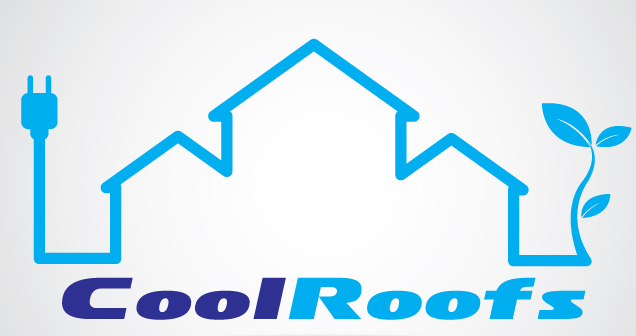
Although everyone wants to have a cool roof that the neighbors envy, what the term “cool roof” means in the roofing industry is one that reflects more sunlight and absorbs less heat than a traditional roof. A cool roof can be made from a variety of materials, but no matter which you choose the benefits extend beyond having the nicest roof on the block.
Benefits of a Cool Roof
Having a cool roof instead of a traditional roof can save you money by reducing how much you need to run the air conditioner during the warmer months. By absorbing less heat, the inside temperature will remain lower and more comfortable. In some climates, a cool roof is enough to eliminate the need for air conditioning most of the time and when it’s time to replace the air conditioning unit, a smaller and less-expensive model may be a possibility.
The benefits go beyond energy savings, too. The local environment may benefit as well. In densely populated areas, an “urban heat island” can form when many homes that are close together all absorb heat and then reflect it in the environment around them. A cool roof can lower the air temperature of the immediate area, and many of them used together can result in a cooler neighborhood.
Cool Roofing Materials
In order for a roof to be considered cool, the outermost layer must be reflective enough while any other layers must not retain too much of the heat that isn’t reflected by the top layer. Choosing the best material for your roof depends on the slope of your roof and the overall climate of your area.
Cool roofs can be made from a variety of materials. Popular choices include:
- Asphalt. Roofing shingles are usually made from asphalt and are typically dark in color and not very reflective. Cool asphalt shingles are made with specially coated materials to give them a reflective surface.
- Tile. Many tile roofs are already made from materials that are reflective enough to be considered cool roofs. Other materials that may be too dark, including clay, slate, and concrete can be treated with a special glaze to be transformed into reflective surfaces.
- Metal. Unpainted metal roofs are usually reflective enough already, however, what heat they do absorb is often retained making them poor choices for cool roofs. Coatings and paints can increase the reflective quality of the metal as well as increasing the metal’s ability to dissipate heat.
- Membranes. Single-ply membranes usually come in prefabricated sheets or rolls and can be adhered to the roof with adhesives or attached with fasteners. Reflective and light-colored materials can be chosen to achieve a cool roof.
- Built-up roofs. These roofs are made from building up layers of asphalt and insulation and then covered with a surfacing material. The qualities of this surfacing material can be made from specially coated materials to make the roof cool.
Don’t Stop at the Roof
Having a properly insulated attic will also help keep your roof temperatures steady while keeping any absorbed heat out of the main living areas of the home. In addition to these cool roof solutions, you always want to be sure that there’s adequate insulation in your attic.
To learn more ways to save on your home energy bills, contact Wattson Home Solutions for a Free Energy Assessment today.







